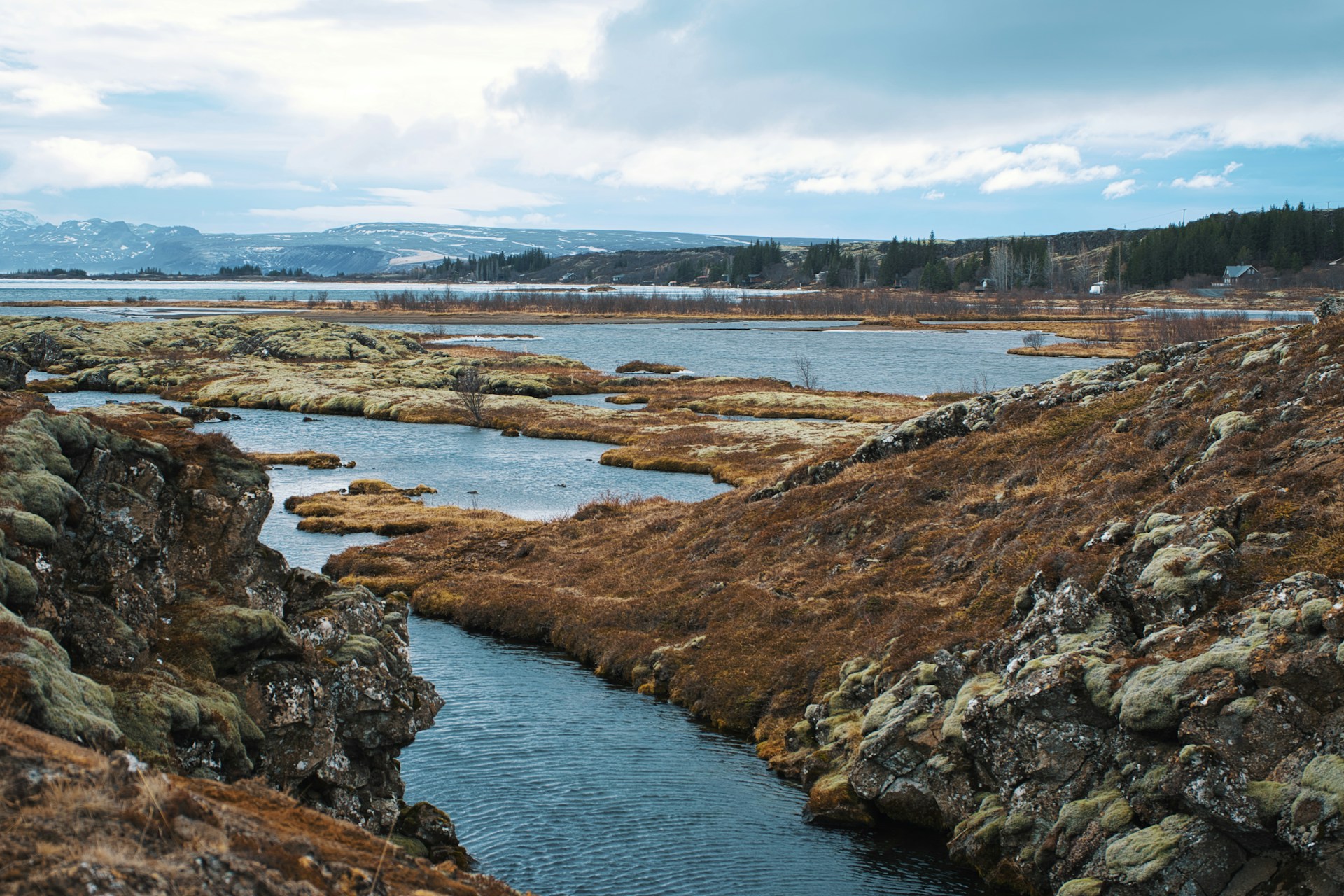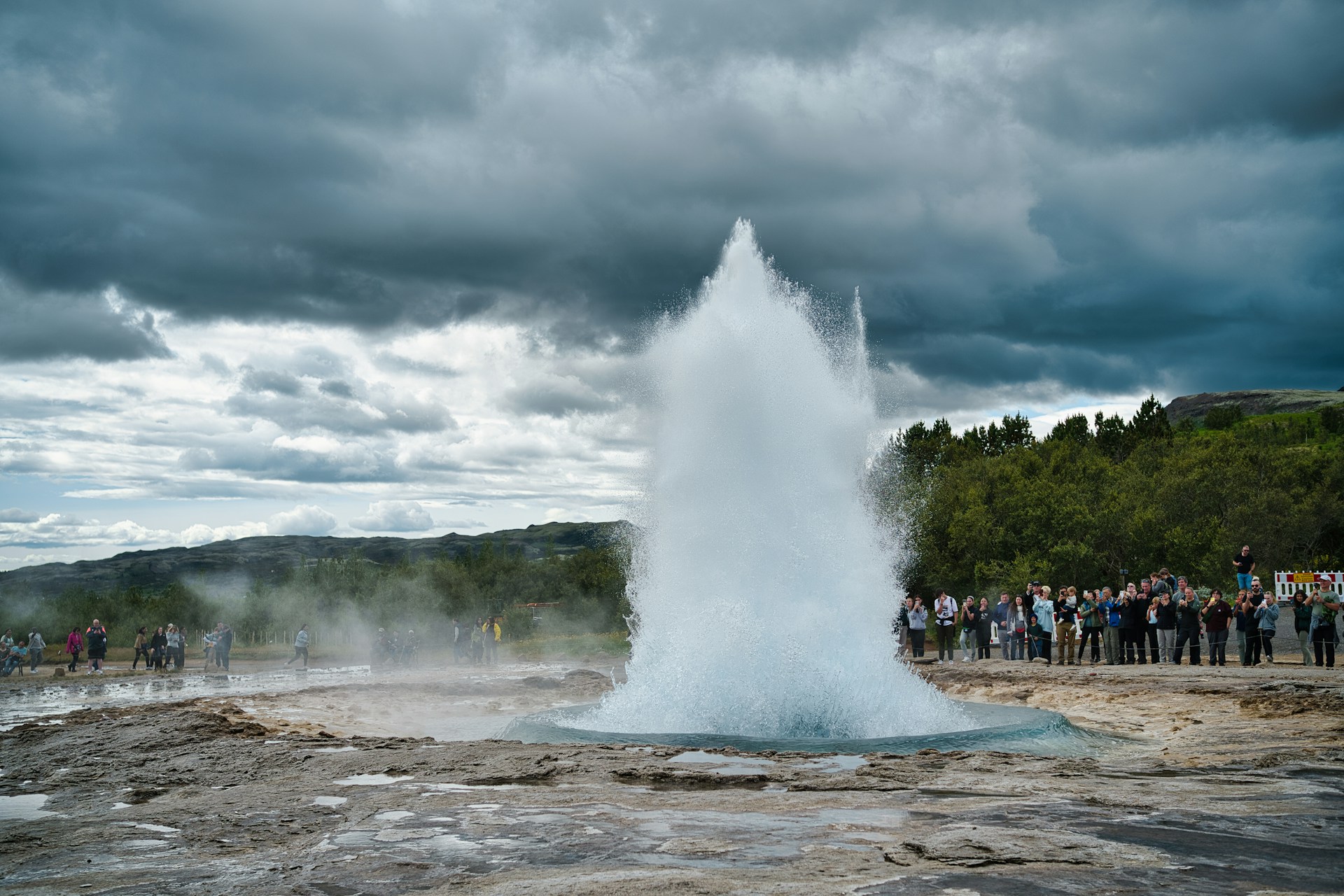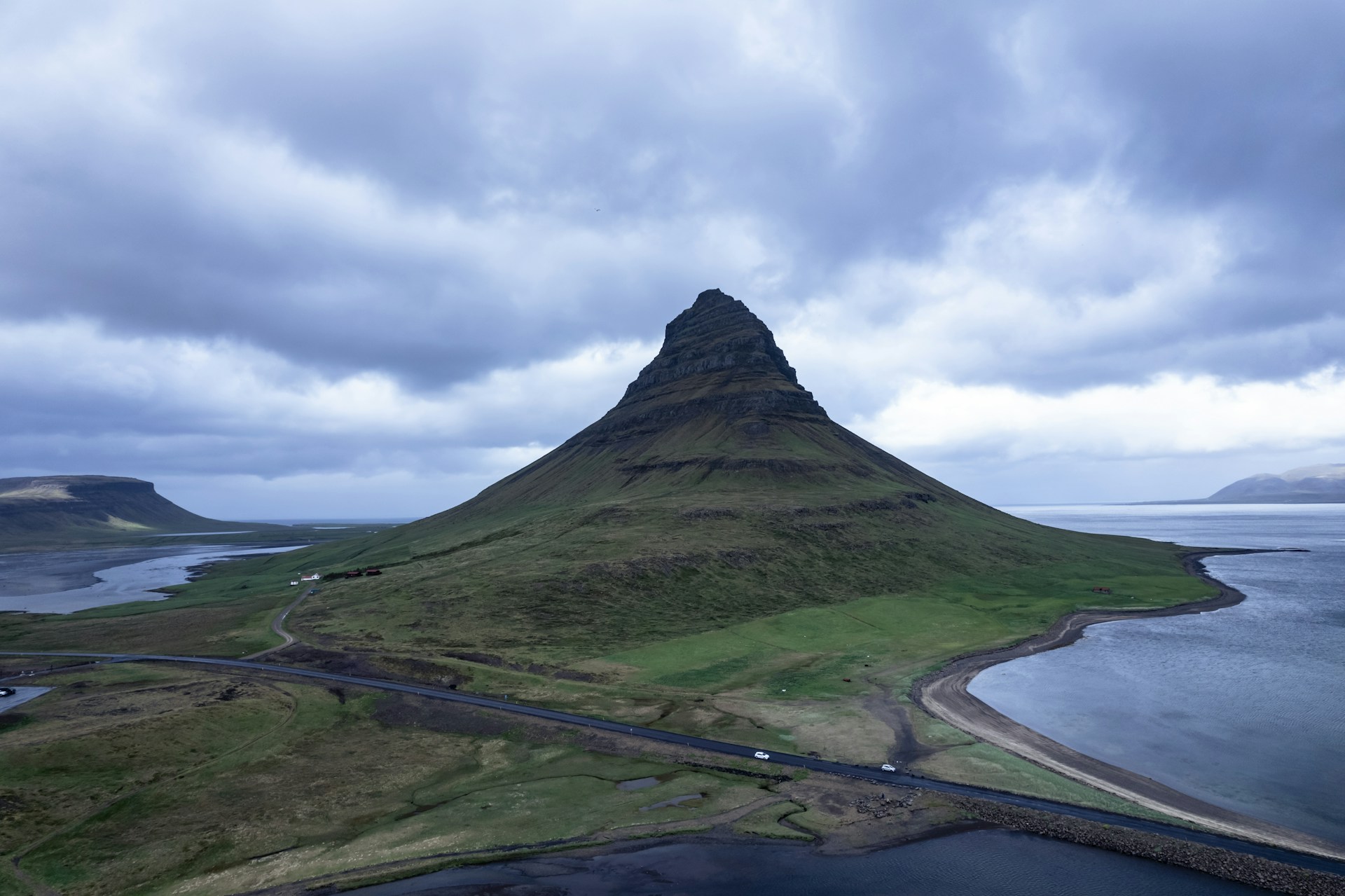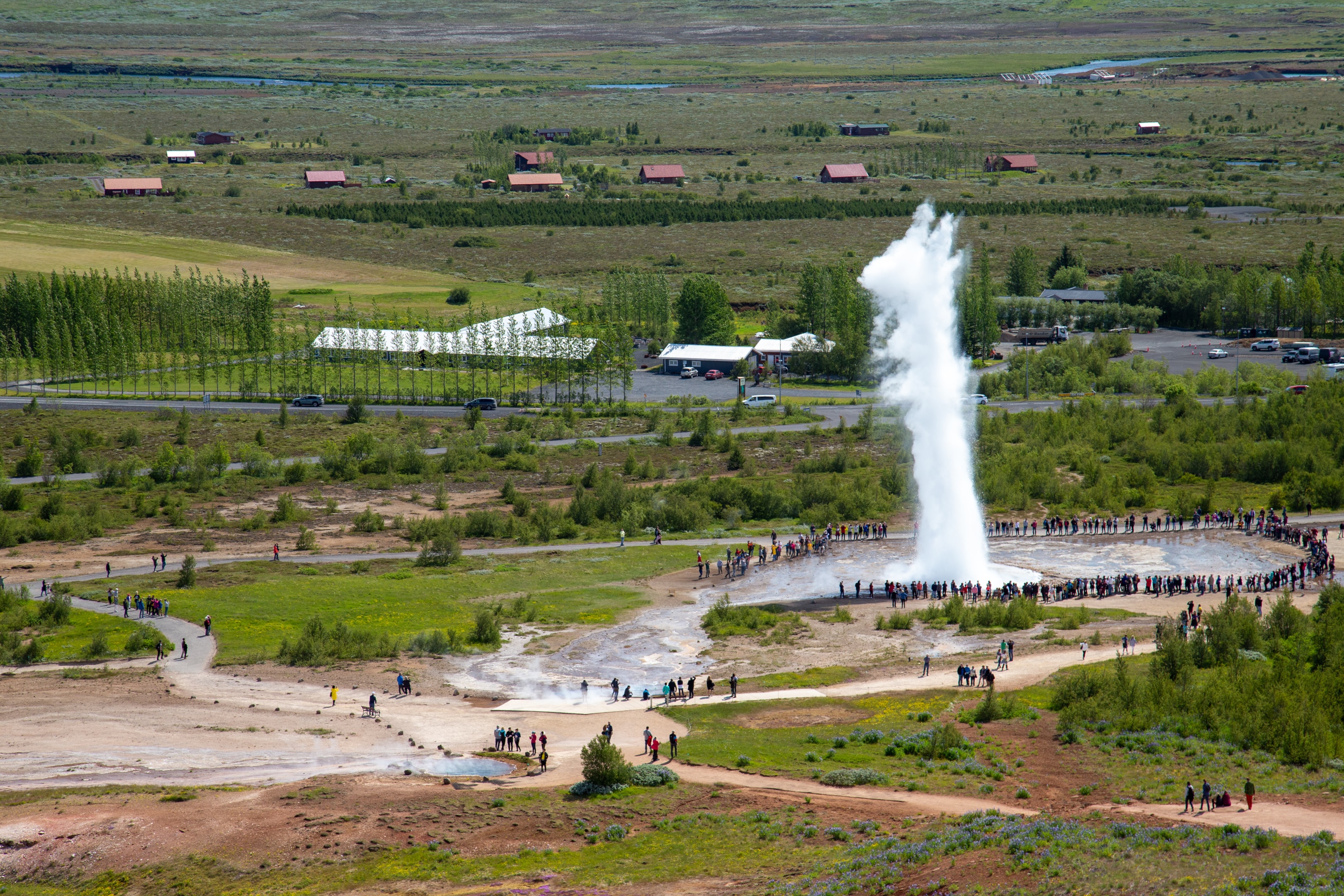Planning a trip to Iceland and trying to decide between the Ring Road and Golden Circle? Both routes showcase Iceland's stunning landscapes, but they offer completely different experiences.
The Golden Circle is a short day trip perfect for first-timers, while the Ring Road is an epic week-long journey around the entire island. Understanding what each route offers will help you choose the right adventure for your Iceland vacation.
Understanding the Ring Road vs Golden Circle Basics

The Golden Circle is a 300-kilometer loop in southern Iceland that takes about six to eight hours to complete. Most travelers finish it in a single day. The route connects three major attractions: Thingvellir National Park, Geysir geothermal area, and Gullfoss waterfall. You can easily do this trip from Reykjavik and return to your hotel the same evening.
The Ring Road, also called Route 1, circles the entire country covering about 1,332 kilometers. This journey typically requires at least six to seven days, though many travelers spend ten days or more to fully explore. The road passes through diverse landscapes including glaciers, black sand beaches, volcanic fields, fishing villages, and remote highlands. Unlike the Golden Circle, the Ring Road demands multiple overnight stays in different locations.
Time Requirements for Ring Road vs Golden Circle Tours
If you only have one day in Iceland, the Golden Circle makes perfect sense. You can start early morning, visit all three main stops, add a few extra attractions like Kerid Crater or Secret Lagoon, and still be back in Reykjavik for dinner. Many Golden Circle tours include pickup and dropoff from your accommodation, making logistics simple.
The Ring Road requires a minimum of six days, but this pace feels rushed. Seven to ten days provides a comfortable timeline where you can actually enjoy each location instead of just checking boxes. Weather conditions in Iceland change quickly, and having extra days built into your Ring Road itinerary gives you flexibility if storms close roads or if you discover spots worth spending more time exploring.
Scenic Highlights: Ring Road vs Golden Circle Comparison

The Golden Circle focuses on geological wonders in a concentrated area. Thingvellir National Park sits on the rift between the North American and Eurasian tectonic plates. You can walk between continents and see where Iceland's parliament was established over a thousand years ago.
The Geysir area features Strokkur, which erupts every five to ten minutes shooting water up to 40 meters high. Gullfoss waterfall crashes down in two tiers into a rugged canyon, creating powerful mist clouds.
The Ring Road takes you through almost every type of landscape Iceland offers. The south coast presents black sand beaches at Reynisfjara, the Jokulsarlon glacier lagoon where icebergs float toward the ocean, and massive waterfalls like Skogafoss and Seljalandsfoss.
The east fjords provide quiet fishing villages and dramatic mountain roads. North Iceland features Lake Myvatn's volcanic formations, Dettifoss waterfall (Europe's most powerful), and opportunities for whale watching in Husavik. The west includes the remote Westfjords if you take a detour, though most Ring Road travelers skip this extension.
Cost Differences Between Ring Road and Golden Circle
A Golden Circle day tour typically costs between 50 to 100 euros per person when booking with a tour company. Self-driving costs less if you split car rental and fuel among several people, usually around 80 to 120 euros total for a rental car for the day. You might spend another 20 to 40 euros on food and optional activities.
The Ring Road requires significantly more investment. Car rental for seven days runs approximately 400 to 700 euros depending on the vehicle type and insurance level. You need at least six nights of accommodation, ranging from 60 euros per night for guesthouses to 150 euros or more for hotels.
Fuel costs add another 200 to 300 euros for the complete circle. Food for a week typically costs 250 to 400 euros per person. Optional activities like glacier hiking, ice cave tours, or boat trips add extra expenses. Total costs for a Ring Road trip usually range from 1,500 to 3,000 euros per person.
Accessibility: Ring Road vs Golden Circle for Different Travelers
.jpg)
The Golden Circle works for almost everyone. The roads are well-maintained year-round, and all major stops have parking lots and facilities. People with limited mobility can access most viewpoints, though some areas like parts of Thingvellir require walking on uneven ground. Families with young children manage the Golden Circle easily because driving distances between stops are short.
The Ring Road presents more challenges. You need confidence driving in various conditions including potential rain, wind, and winter ice. Some sections pass through remote areas where services are limited.
The east fjords feature winding mountain roads with steep dropoffs. If you are not comfortable driving for several hours daily or dealing with unpredictable weather, the Ring Road might feel stressful rather than enjoyable. However, the route itself is well-signed, and the main road stays paved throughout.
Popular Golden Circle Tour Options
.jpg)
Standard Golden Circle tours include transportation and a guide who explains the geological and historical significance of each stop. These tours typically last eight hours and visit Thingvellir, Geysir, and Gullfoss. Some tour companies add stops at Kerid Crater, a volcanic crater lake with striking red rock and blue water.
Extended Golden Circle tours combine the classic route with additional experiences. Golden Circle and Northern Lights tours run during winter months, visiting the main attractions during daytime then searching for auroras after dark.
Golden Circle and Blue Lagoon tours let you relax in geothermal waters after sightseeing. Golden Circle and snowmobile tours add glacier adventure to the geological highlights. Golden Circle and snorkeling tours include diving or snorkeling in Silfra fissure at Thingvellir, where you can swim between tectonic plates in crystal-clear water.
Ring Road Self-Drive and Guided Tour Choices
Most travelers complete the Ring Road as a self-drive adventure, giving them freedom to stop wherever looks interesting and adjust timing based on weather and personal preferences. Self-drive Ring Road trips let you choose your own accommodation, detour to less-visited spots, and spend extra time at favorite locations. You can rent a standard car for summer travel or upgrade to a four-wheel-drive vehicle for off-season trips and highland access.
Guided Ring Road tours remove the stress of navigation and planning. Small group Ring Road tours typically carry eight to twelve passengers in a minibus with an experienced guide who handles all driving and knows the best spots for photography and wildlife viewing.
These tours include accommodation, usually in guesthouses or hotels along the route. Private Ring Road tours offer more flexibility and personalized pacing but cost significantly more than group options or self-driving.
Photography Opportunities on Ring Road vs Golden Circle

The Golden Circle delivers several iconic photo opportunities in a short timeframe. Gullfoss waterfall looks dramatic from multiple angles, especially when rainbows form in the mist. Strokkur geyser eruptions make for exciting action shots if you time your shutter correctly. Thingvellir's rift valley provides wide landscape compositions showing where continents separate.
The Ring Road is a photographer's dream offering endless variety. Black sand beaches with basalt columns and sea stacks create moody seascapes. Jokulsarlon glacier lagoon presents surreal scenes with blue icebergs against black sand.
Kirkjufell mountain in the west is one of Iceland's most photographed peaks. The east fjords provide mirror-like reflections in calm weather. Northern waterfalls like Godafoss and Dettifoss show raw power. Midnight sun in summer and Northern Lights in winter add special lighting conditions not available on shorter trips.
Combining Ring Road and Golden Circle in One Trip
If you have ten days or more in Iceland, you can experience both routes. Many travelers start with a Golden Circle day trip to adjust to Icelandic conditions and get their bearings, then embark on the Ring Road journey. This combination gives you the concentrated highlights first, followed by the expansive exploration.
Another approach is completing the Ring Road but taking a detour to hit Golden Circle spots you might have missed on the main route since the Golden Circle sits just off the southern section of Ring Road. You could visit Thingvellir, Geysir, and Gullfoss while traveling between Reykjavik and the south coast, essentially incorporating the Golden Circle into your Ring Road itinerary.
Which Route Matches Your Travel Style
Choose the Golden Circle if you have limited time, prefer not to change hotels frequently, want to minimize trip planning, or feel nervous about extended driving in unfamiliar conditions. The Golden Circle works perfectly for travelers visiting Iceland for three to four days who want to experience major highlights without committing to a long road trip. It is also ideal if you plan to base yourself in Reykjavik and take different day trips to various regions.
Choose the Ring Road if you have at least a week available, enjoy road trips and driving through changing landscapes, want to see Iceland's diversity beyond the tourist hotspots, and appreciate having flexibility in your schedule.
The Ring Road suits travelers who want deeper immersion in Iceland's nature and don't mind packing and unpacking several times. It is the better choice if you want to escape crowds since many Ring Road locations see fewer visitors than Golden Circle attractions.

.webp)
